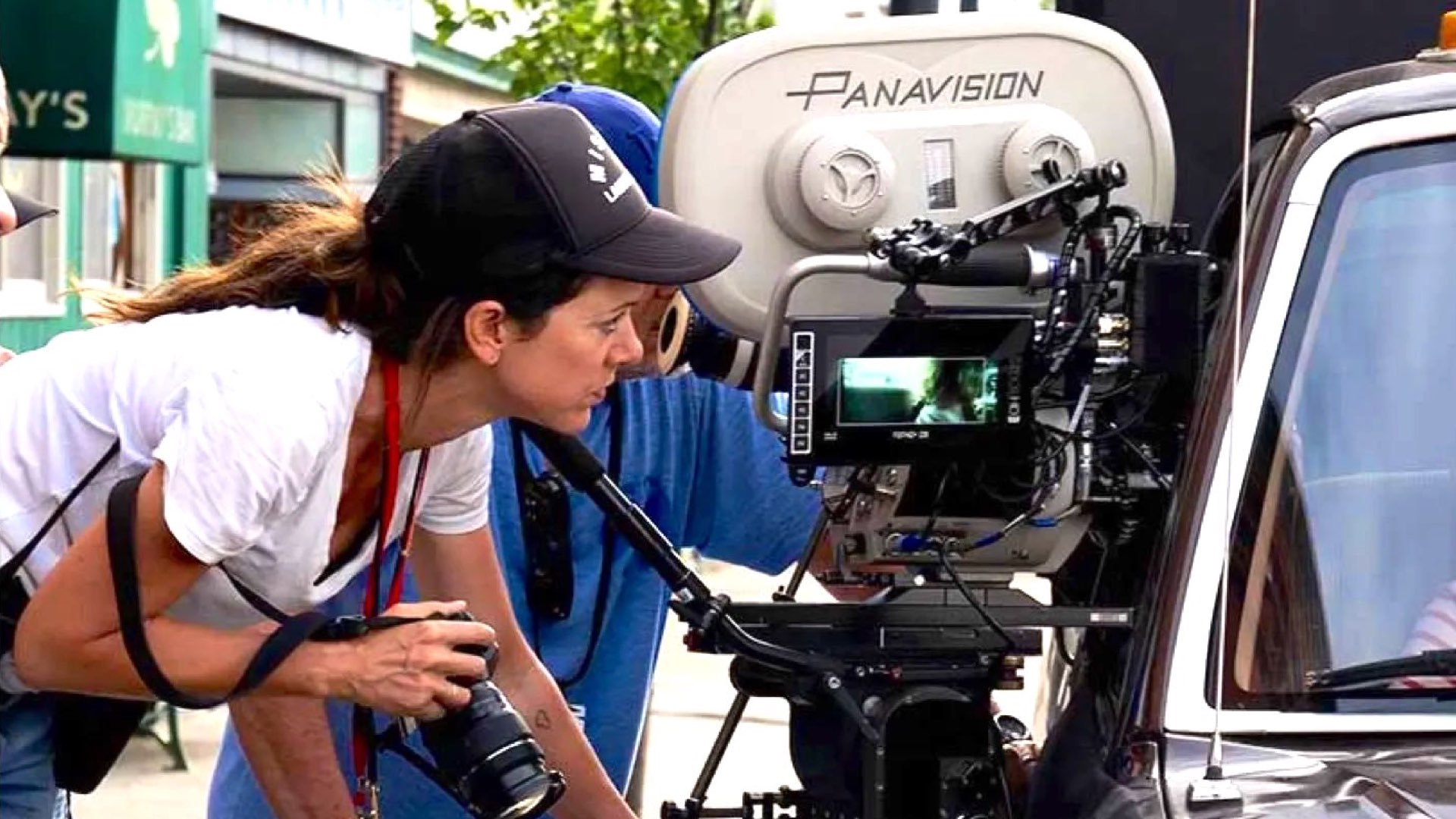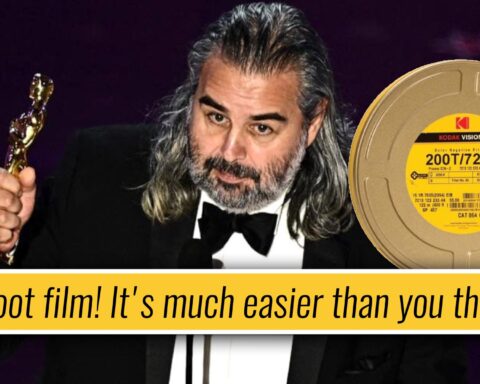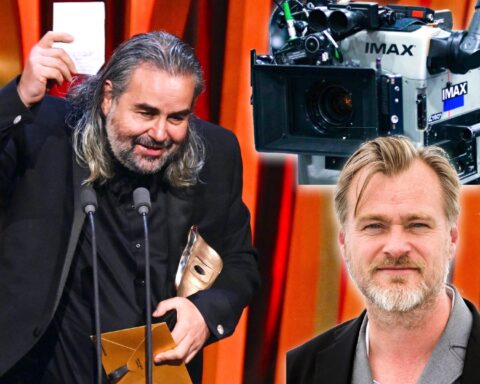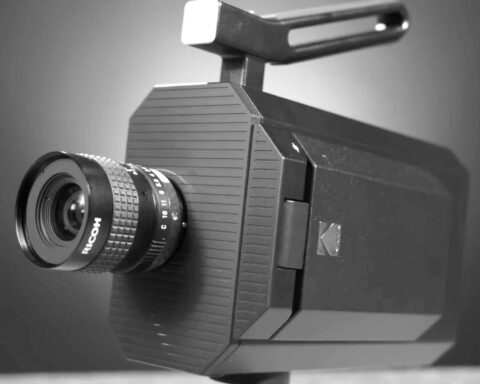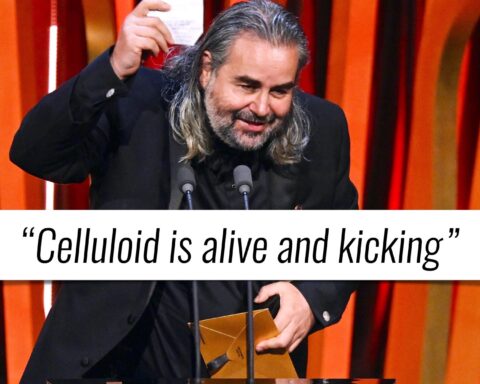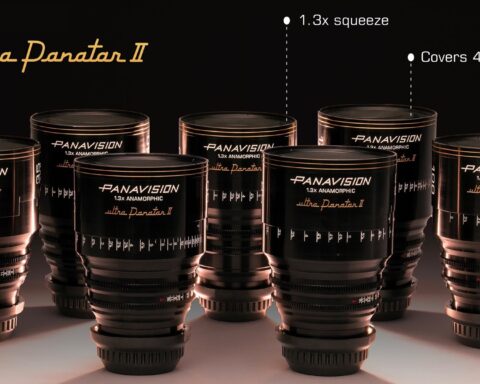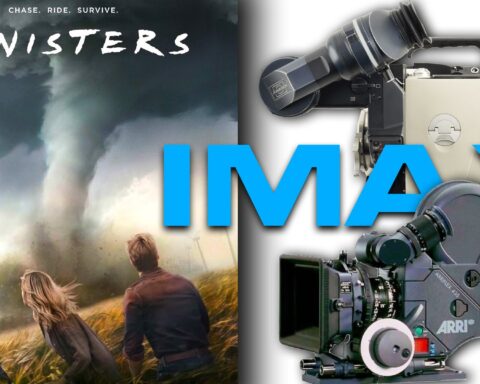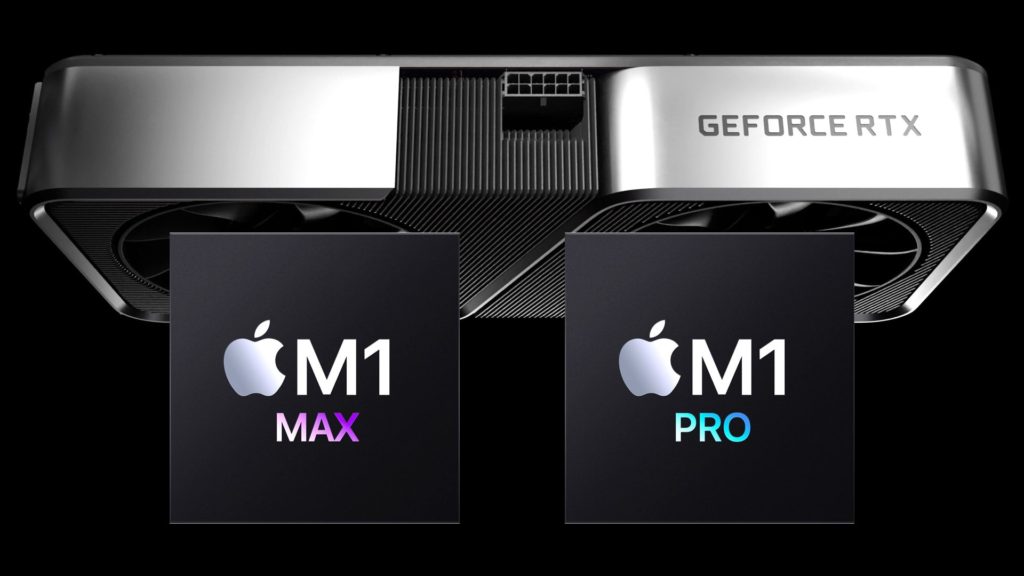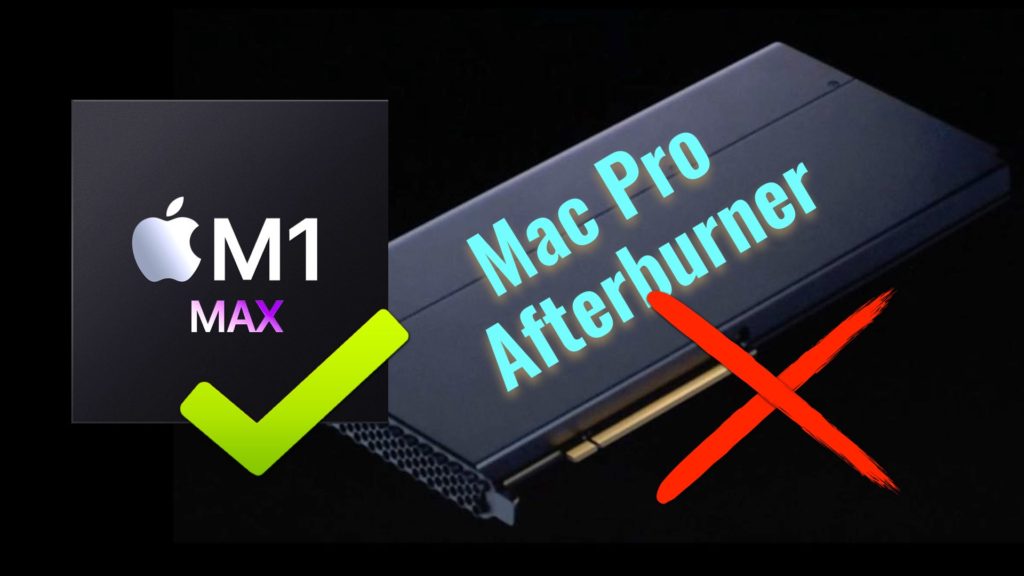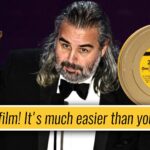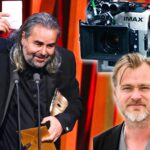Despite all the valid challenges, Polly Morgan ASC BSC shot ‘A Quiet Place Part II’ on film. In an interview to the Go Creative Show, Morgan elaborates on the advantages and disadvantages of shooting on film cameras, and how this artistic decision changes a lot of parameters in almost any aspect of the movie creation process. Also, what’s the future of film cameras?
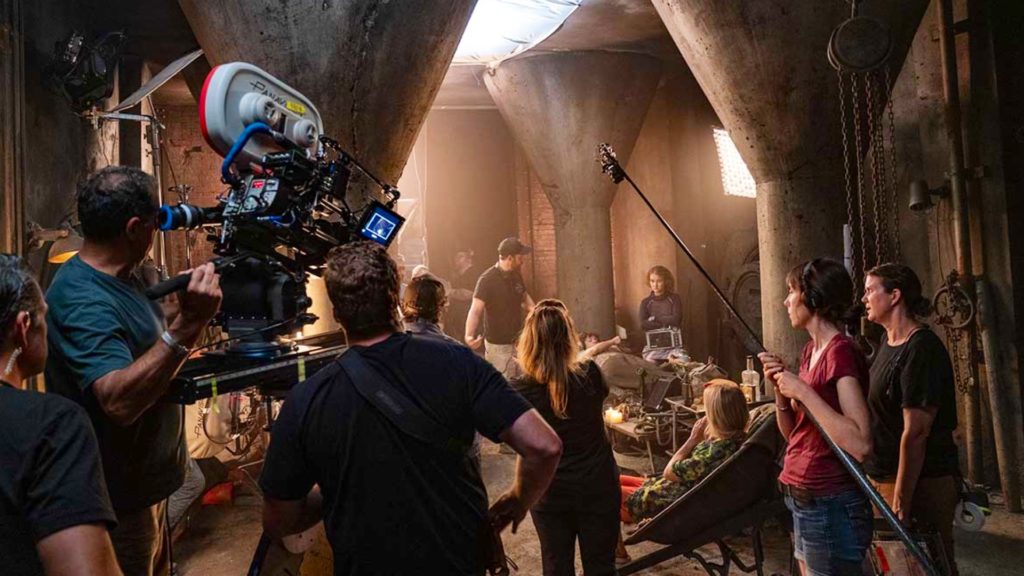
Polly Morgan: The youngest member of ASC
Morgan has started her career as a production assistant and in multiple roles in the camera department. From the start, she aimed to be a cinematographer. That was (and still is) her main goal. She worked under numerous cinematographers and attended the American Film Institute’s AFI Conservatory as a Fulbright Scholar, graduating with a Master of Fine Arts degree in cinematography. She is accredited by the British Society of Cinematographers (BSC) and the American Society of Cinematographers (ASC). As far as I know, Morgan is the only woman to be a member of both and the youngest member of ASC.
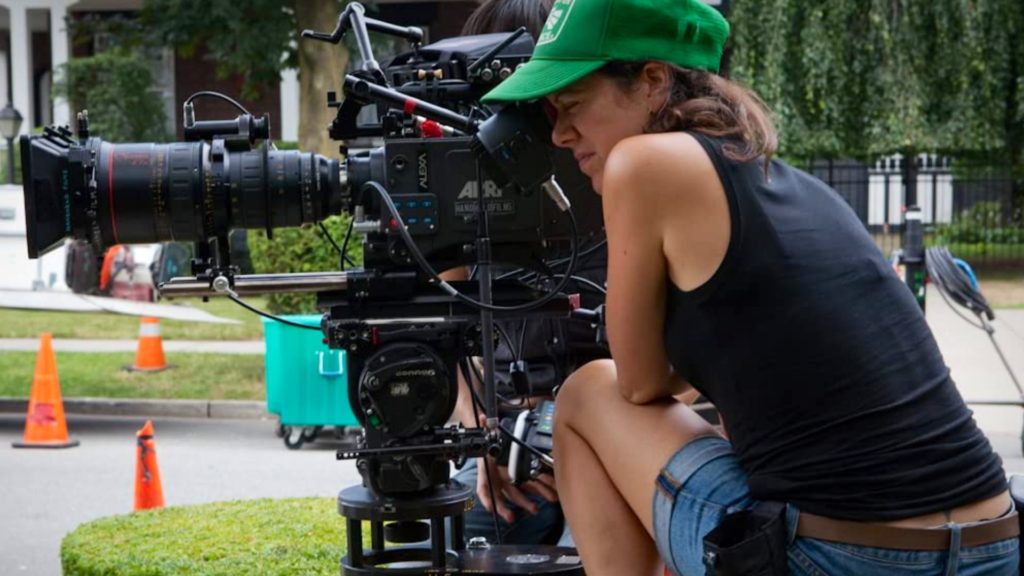
Shooting on film: Elevating complexity (and everything)
Morgan stated that the decision to shoot ‘A Quiet Place Part II’ on film was made in order to continue the classic look and feel of the first film. “John (the director) really wanted to shoot on film. It added a level of complexity to the production. We had to transport the negatives to scanning purposes and it took a few days before we even saw the dailies. It’s not like shooting digital that what you see is shat you get. Everybody was eager to see the dailies. And that made the studios nervous”, Morgan shared her thoughts on an interview to Go Creative Show. Morgan shot the film on the Panavision XL2 paired with the T-series anamorphic. On very specific sequences, the ARRI ALEXA Mini was used, especially when shooting in tight places, remotely (the bus scene), and in a very dark environment.
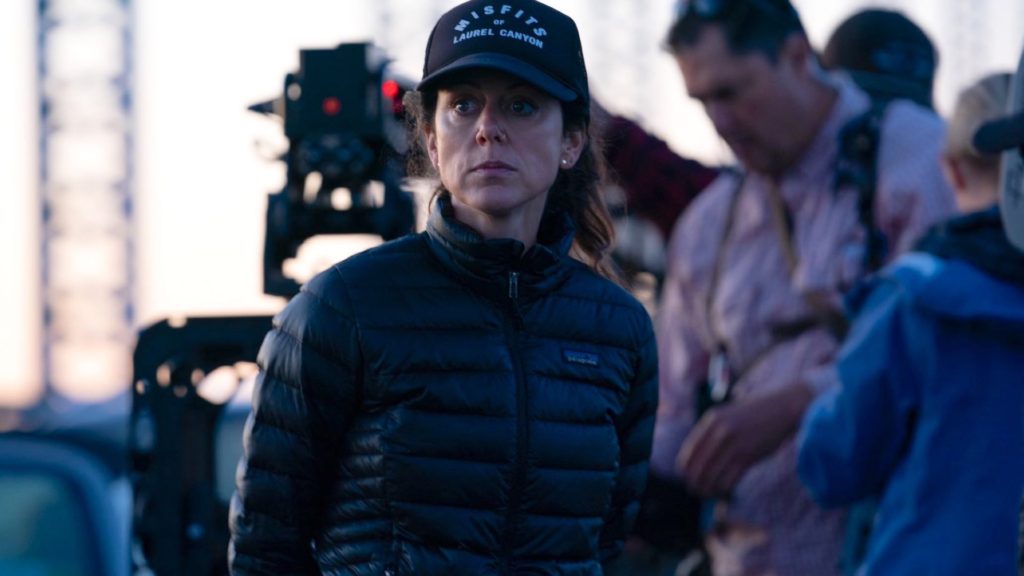
Your best friend: The Light Meter
According to Morgan, when shooting on film, as opposed to digital, there’s no backup. Monitoring the image is much more complicated (and risky). You can’t judge exposure by looking on monitors. Thus, your light meter is your best friend. However, “It’s a phenomenal experience for cinematographer” she admits. There’s no calibrated imagery. Nevertheless, as a cinematographer, you feel freer, as you’re not buried into that video village, but walking around the crew with your light meter. Shooting on film enhances the whole filmmaking experience, and makes the DP more present during the principal photography.
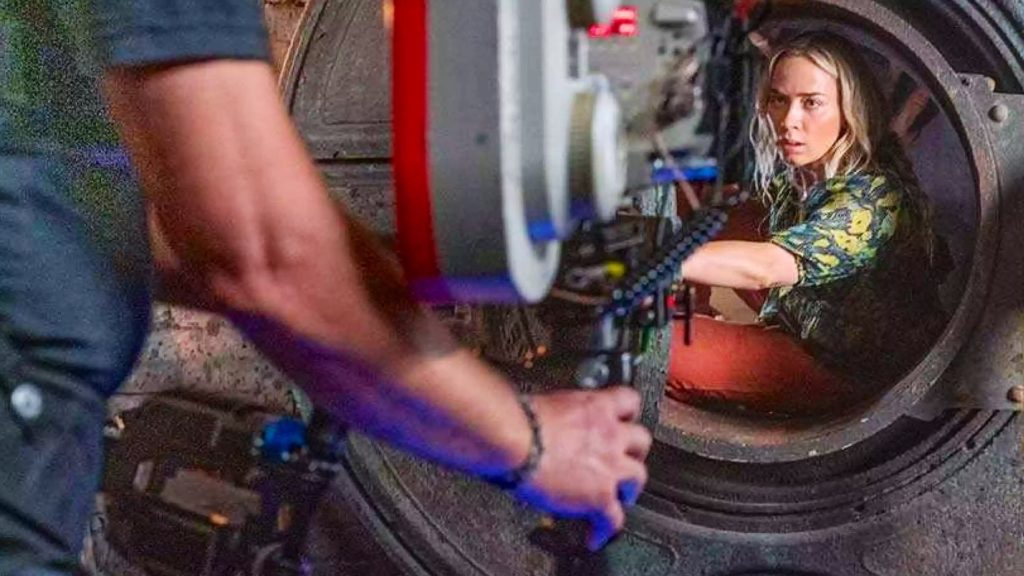
Better to overexposed than underexposed
Morgan shot ‘A Quiet Place Part II’ with 2 film stocks. In the film, a huge amount of light must be utilized. “You don’t want to underexposed film, because, as opposed to digital, the blacks constitute a true challenge to be recovered in post. You don’t have that flexibility in post compared to digital. However, the film has a tremendous dynamic range, and when the dailies come, you see those details in the highlights, even when overexposed” Morgan says. Hence, according to Morgan. you’d better be overexposing than underexposing.
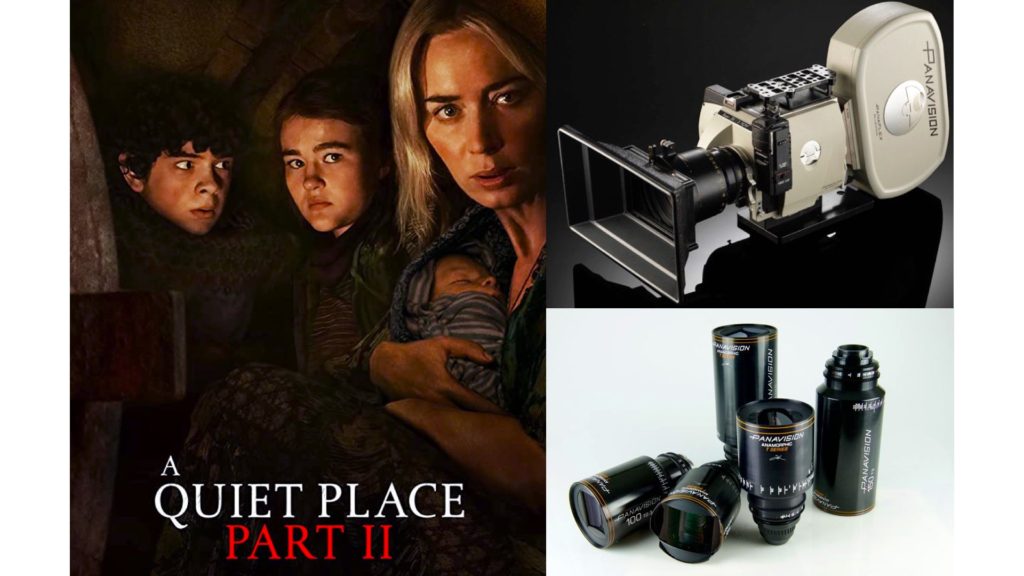
Motion, grain, texture.
Morgan says that that the level of specification is higher in digital cameras. You have the privilege of manipulating the imagery further, as opposed to film stock. The video village grants you powerful and modern tools to do so in real-time, like HDR monitors and LUTs. The adjustments are much more precise. On the contrary, when shooting film, your instincts replace the digital LUTs. Thus, film cameras demand better visual instincts, as your eyes assemble the image and simulate the desired look, and thus you have to rely and trust on your inner creativity and artistic skills. Listen to the whole interview below:
The future of film cameras
Our charts show a reduction in the usage of film cameras in top productions. If we take the Oscars as a reference (as it’s the best reference in regard), we explore a significant decrease of movies shot on film cameras. For instance, in Oscar 2020, film cameras were the majority of cinema cameras used on set, as opposed to the Academy Awards 2021, which shows that only a third of the movies were shot on film. The main film cameras used are ARRIFLEX and XL2. The 235 and the 435 are being utilized in action sequences when a compact form factor is needed. The Panavision XL2 is the main favorite and weapon of choice of celluloid shooters that aim for the huge canvas (IMAX theater). Explore the charts below:
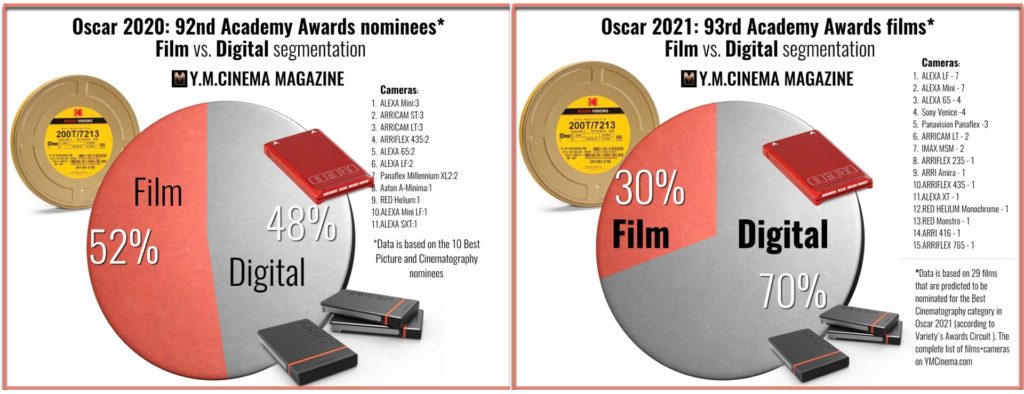
Closing thoughts
As a film lover, I think that there’s nothing like pure natural light burned into celluloid and then screened in a movie theater. It’s the natural process of creating images. The camera is the brush, and the film stock is your canvas. Nevertheless, it demands expertise, skill, knowledge, and instincts. The film stock is as precious as gold but defeats any ultra-sophisticated high-resolution digital sensor. What’re the chances that a new and affordable film camera at the consumer level will be introduced? That would be a wonderful announcement for filmmakers. Unfortunately, it seems that the technology is going the opposite direction, by inventing more larger sensors with more resolution. That’s the reason that image quality has reached a plateau. Don’t you think?


